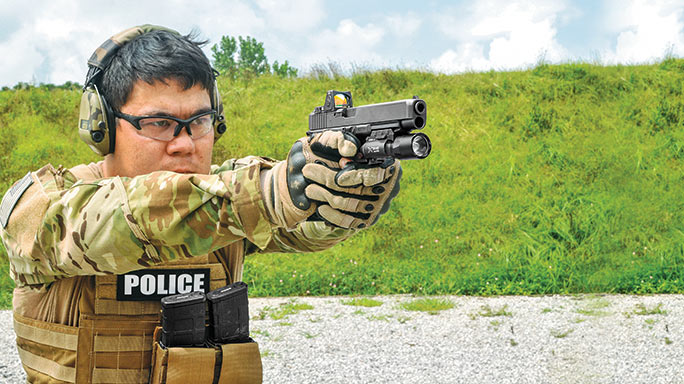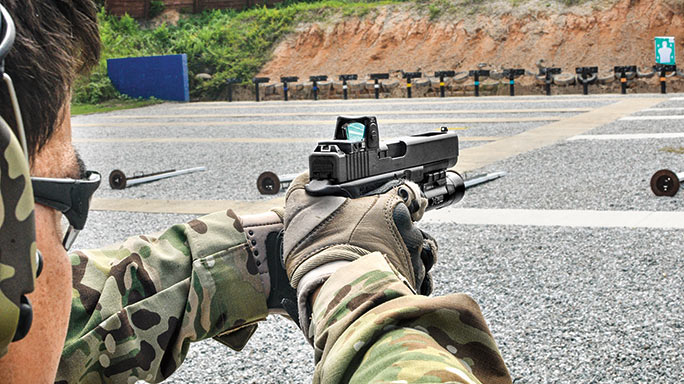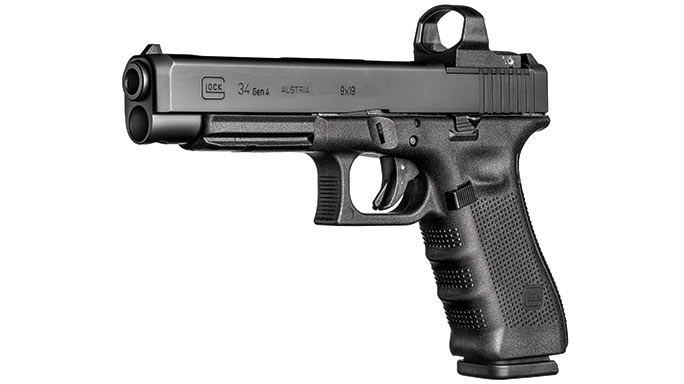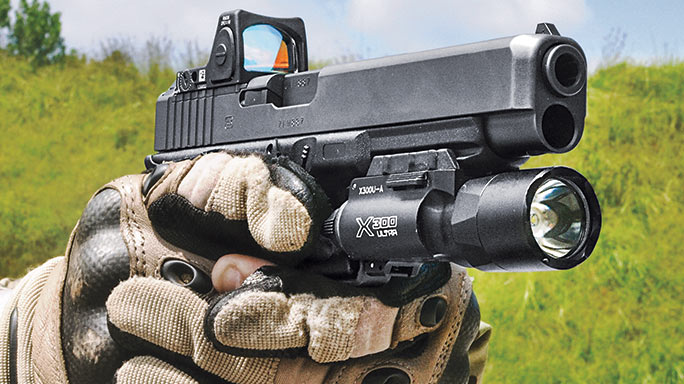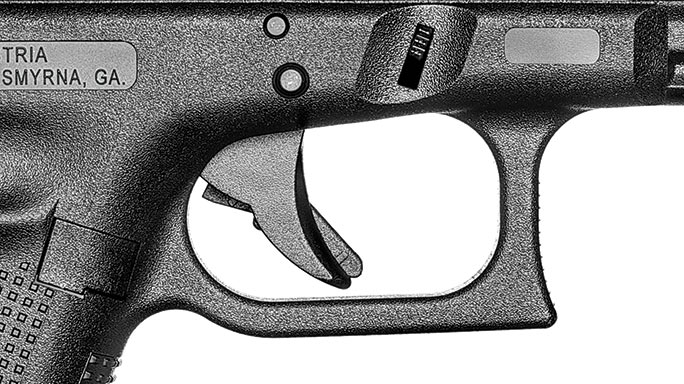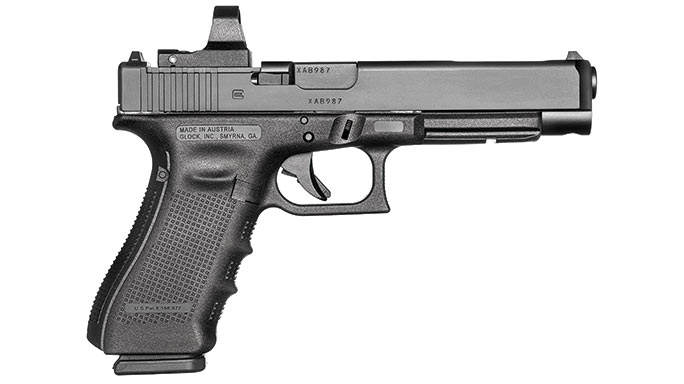For those in law enforcement, the tactical team is whom we call when we are in trouble. Whether it is called SWAT, SRT, ERT or any number of other names, these are the officers who handle the high-risk details. These range from high-risk warrants, hostage rescues, dignitary protection or special events such as the Boston Marathon or the Super Bowl. Not all of these duties allow the team members to carry a long gun. In those cases, these teams rely on their pistols to accomplish the mission.
- RELATED STORY: Dead-On Accurate: Glock’s MOS Glock 35 Gen4 Pistol
Having a duty weapon that is reliable, durable and easily operated is essential to every law enforcement officer who goes into harm’s way. These three qualities have made Glock a legend in American law enforcement.
While tactical teams have long favored the Glock 17, in recent years teams have taken a hard look at the Glock 34. The Glock 34 is based on a G17 frame but has an extended slide and barrel. This makes the Glock 34 ideal for tactical use where the longer barrel and slide provide a longer sight radius, reduced recoil and improved accuracy.
Advertisement — Continue Reading Below
The Glock 34 features a 5.31-inch barrel as compared to the 4.48-inch barrel found on the G17. The Glock 34 Gen4 weighs in at 25.95 ounces unloaded, which is only 0.89 ounces more than the G17 Gen4, and incorporates all of the Gen4 features, including Glock’s Modular Backstrap System.
More Precision
As is often the case, the tactical community adopts equipment developed for the competitive market. Such is the case with pistol-mounted reflex sights, which are more intuitive and faster than traditional sights. The only alignment that is necessary is for the shooter to place the red dot on the intended target. This single-plane focus is parallax-free, making it easier for the shooter to index the target while keeping both eyes open. In turn, the shooter has improved speed and situational awareness with less tunnel vision. It’s also easier to transition between targets.
Advertisement — Continue Reading Below
This progression has been made possible because of the advancements made in miniature reflex sights. One of my favorite mini reflex sights is the family of Trijicon RMR sights. The RMR, or Ruggedized Miniature Reflex, is available in a battery-powered LED version or a dual-illuminated version that combines battery power with tritium. At 1.73 inches in length and weighing a mere 1.2 ounces, the RMR is ideal for law enforcement duty.
Glock recently introduced four Modular Optic System (MOS) pistols, including the Glock 34 Gen4 in MOS Configuration, which is similar to a Glock 34 Gen4, but the rear of its slide has been machined to accept mounting plates for a number of miniature reflex sights, including those from Docter, Leupold, Trijicon, C-More and EOTech. The Glock 34 Gen4 MOS comes equipped with standard Glock sights at the front and rear, but it can also be upgraded with high-profile suppressor sights.
In a tactical situation, an optic-equipped pistol can provide a distinct advantage. Having shot a number of optic-equipped pistols, I can attest to the improved speed, accuracy and situational awareness.
Advertisement — Continue Reading Below
However, to realize the advantages of an RMR-equipped Glock 34 Gen4 MOS requires dedicated training. In order to “find the dot,” the shooter’s grip, drawstroke and firing must be adapted to the sight. This is accomplished by repetitive presentations to refine the movement and lockout point.
Shooters also find that the red dot tends to wobble more than the traditional front sight. The shooter must also learn to trust the natural wobble of the dot, much like a high-power rifle competitor does. Once this is learned, shooters are usually amazed at the shots that are possible. Regular hits on a steel silhouette at 100-plus yards become the norm, something most officers would not attempt with iron sights.
There are two serious concerns with optic-equip-ped pistols. The first is what happens if the dot fails? The simple answer is that the shooter reverts to using the iron sights. This is why iron sights are still necessary. These sights must be visible through the optic and allow for a proper traditional sight picture. The second concern is what happens if the lens of the optic becomes obstructed by mud, snow or other foreign materials? This is a valid concern and should be addressed during training. Drills should include shooting with iron sights and an obstructed optic.
Advertisement — Continue Reading Below
- RELATED STORY: First Look: Glock’s New MOS Configuration G17, G19
The introduction of the Glock 34 Gen4 MOS is indicative of Glock’s confidence in both the Glock 34 Gen4 and modern miniature reflex sights. I predict that, in the future, readers will see more law enforcement tactical teams using pistols with optics. That being the case, the Glock 34 Gen4 in MOS Configuration and the other MOS models will be at the head of the line.
For more information on the Glock 34 Gen4 MOS, visit Glock.com or call 770-432-1202.
Glock 34 Gen4 MOS Specifications
Advertisement — Continue Reading Below
- Caliber: 9mm
- Barrel: 5.31 inches
- OA Length: 8.74 inches
- Weight: 25.95 ounces (empty)
- Stock: Polymer
- Sights: Fixed
- Action: Safe Action
- Finish: Matte black
- Capacity: 17+1
- MSRP: N/A
